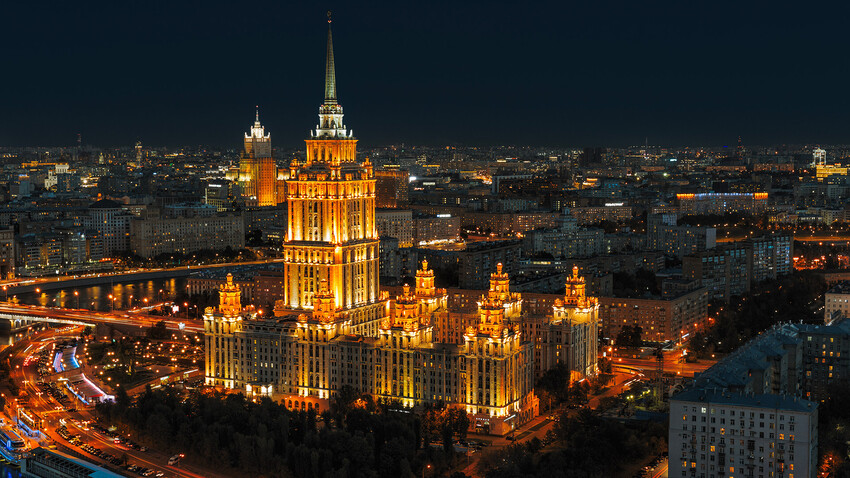
After World War II, Joseph Stalin decided to carry out a large-scale reconstruction of Moscow. To make the city a "show" capital, he came up with one of the greatest architectural projects of his time, that is the erection of the first skyscrapers. It is for this that they were nicknamed ‘Stalin's high-rises’. They were supposed to symbolize the triumph and greatness of the country. The following words are universally attributed to Stalin: “Some of us travel to America, then come back and gasp – wow, what huge houses they have! So, let them now come to Moscow, see what kind of houses we have and let them gasp.”
Despite the fact that Stalin's high-rises are largely compared to American skyscrapers, they are made in their own unique architectural style or rather a mix of all kinds of styles, which was later dubbed ‘the Stalinist Empire’. Monumentality and abundant decorations are its main features. Read more about what the Stalinist Empire style involves here.
The first bricks of all Stalin high-rises were laid on the same day – in 1947, to celebrate the 800th anniversary of Moscow. However, they were completed in different years. According to the plan, there were supposed to be eight skyscrapers – one for each century. But, only seven were completed; construction of the eighth one – in Zaryadye – was halted and dismantled after the leader’s death.
All high-rises are located in different parts of Moscow, but relatively close to the center, so they are visible from almost any point of the city.
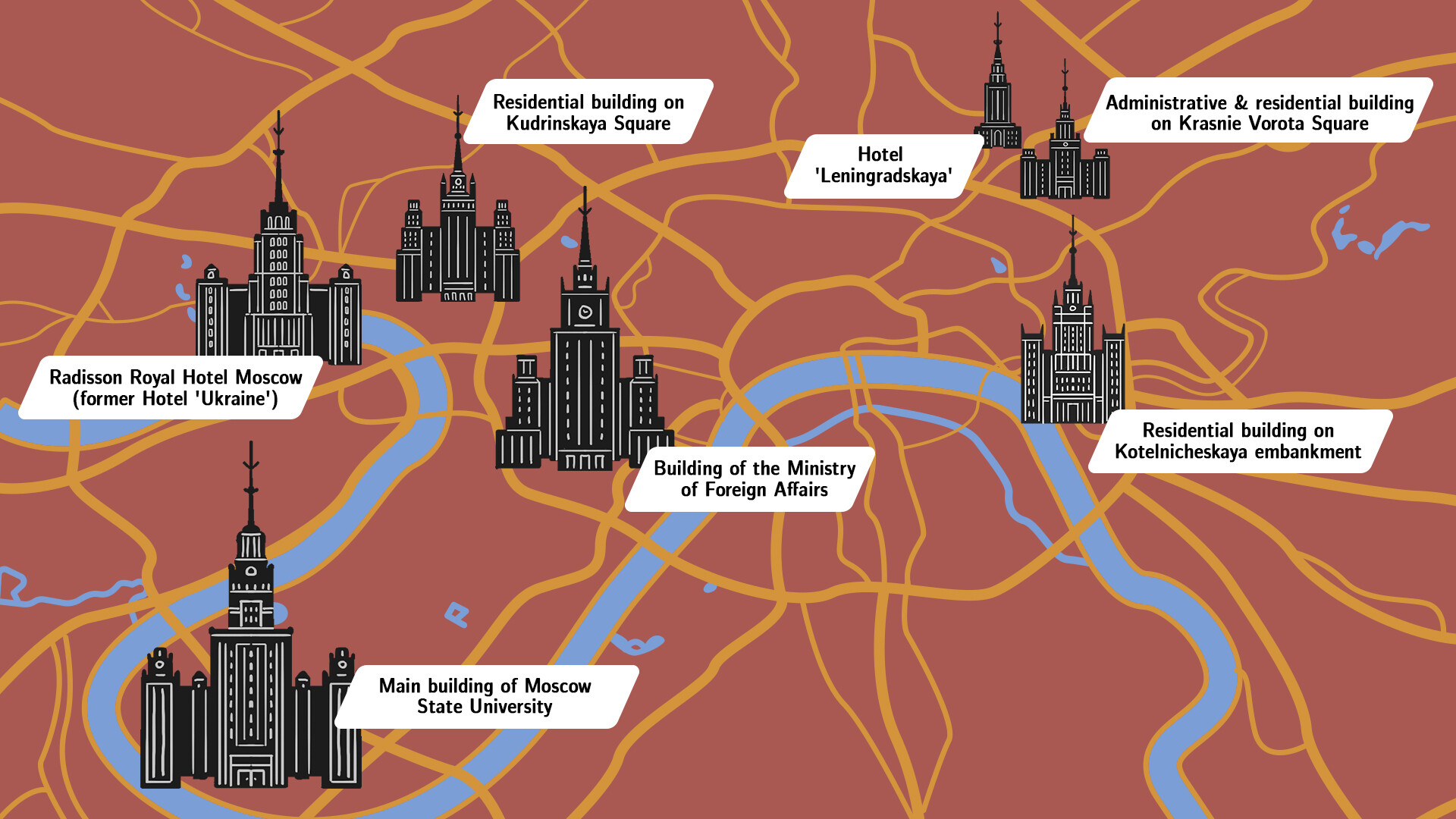
From the very beginning, each skyscraper had a different purpose – they had residential blocks, ministries, a university, hotels and even… a subway station. And, although the external appearance of the Stalin high-rises is pretty similar, only locals can distinguish between them.
The main building of the Moscow State University – the first Soviet campus, worth an entire city in terms of cost.
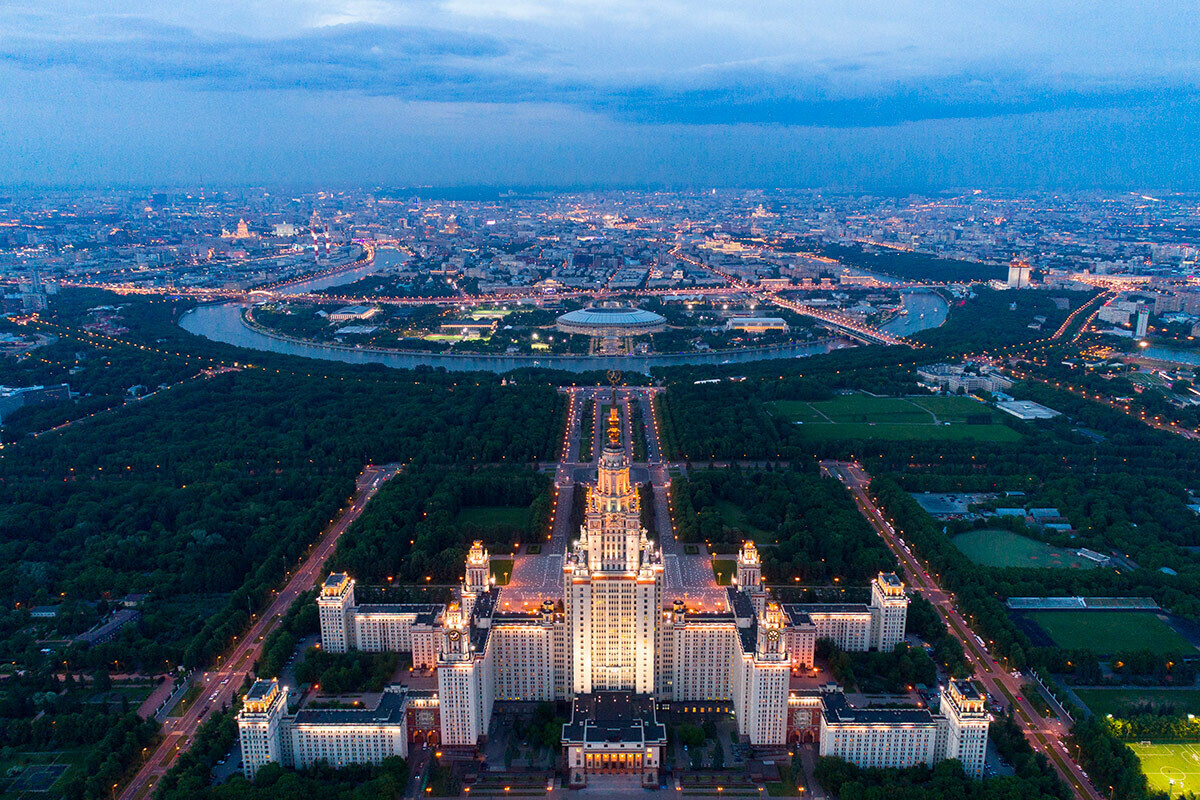
The 235-meter high-rise on Vorobyovy Gory is the tallest of them all. The building was originally planned to house the country's main university, the Moscow State University, making it a small city for up to 10,000 people. The complex also became the first Soviet campus. On its territory, all the necessary infrastructure could be found – classrooms, dormitories, libraries, a post office, a store, a canteen, a swimming pool, a telegraph and other amenities. If they so wished, students didn’t even have to leave the campus at all until the end of the academic year.
Since all high-rises were conceived as symbols of grandeur, no money was spared on their decoration. The building of the Moscow State University with its columns, stucco and mosaics cost the budget 2,631,200,000 Soviet rubles - about the same amount of money needed to build a small city of 5-storied panel houses for 40,000 residents!
Read about whether it is true that the high-rise was built by convicts, why not all faculties wanted to move there after the opening and how to get into the building here.
This high-rise cannot be confused with any other, because its windows overlook the Kremlin, with this fact making the story of its construction even more striking. The building was built by Gulag prisoners and, up until 1953, the prison camp was located right on the construction site, just 900 meters away from the Kremlin. To prevent anyone from escaping, the entire area was surrounded by a three-meter fence with five lines of barbed wire and a half-meter no-go zone.
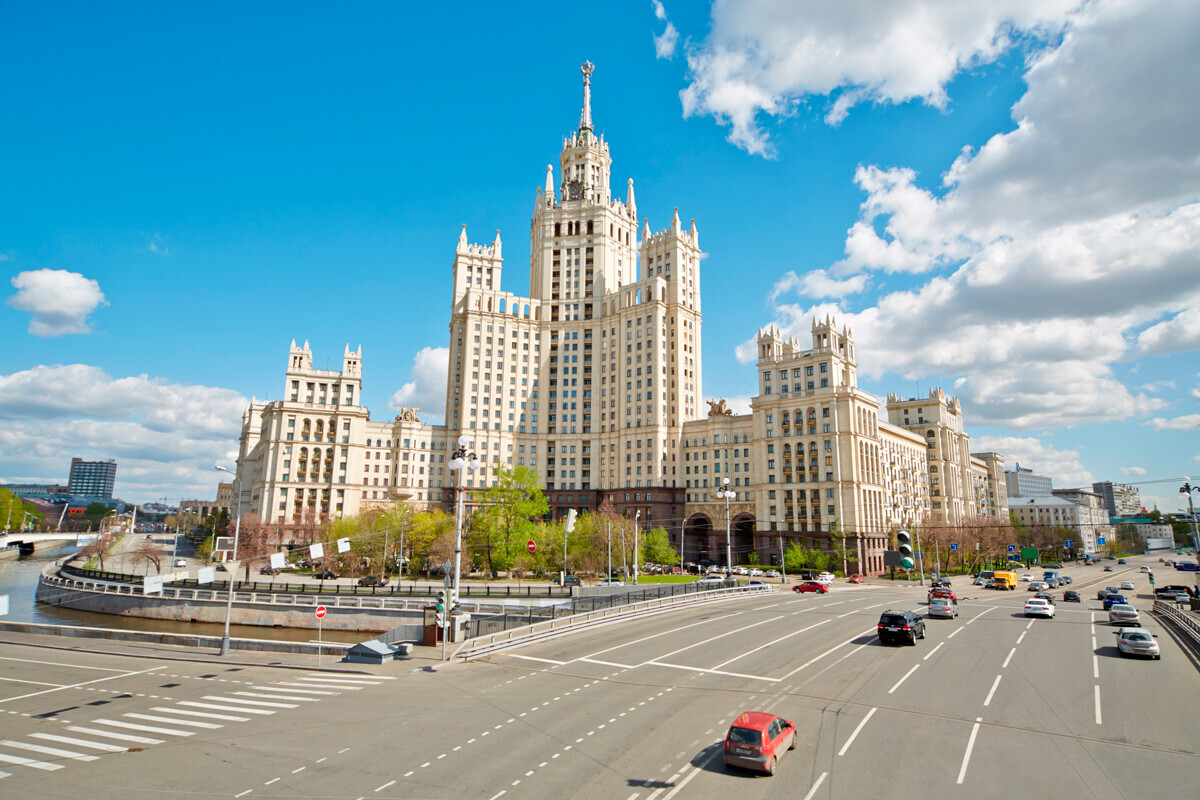
The high-rise was an elite apartment building "for a close circle of people". They say that was the logic according to which the keys to apartments were handed out. It became home to security force officers, nuclear physicists, military men and the creative intelligentsia, who, in turn, raised the prestige of the building. Thanks to the latter, this skyscraper became the most cinematic and appeared in many iconic Soviet movies and TV shows.
Find out what movies were filmed there, what celebrities lived in the house and why not everyone likes to live in it here.
The building of the Ministry of Foreign Affairs was once a technological marvel. The skyscraper was built not from the bottom up, but from the top down: the concrete casting started from the upper floors, at a height of 172 meters, and as the concrete hardened, it went down floor by floor. This made it possible to start construction in the historical quarter in extremely cramped conditions.
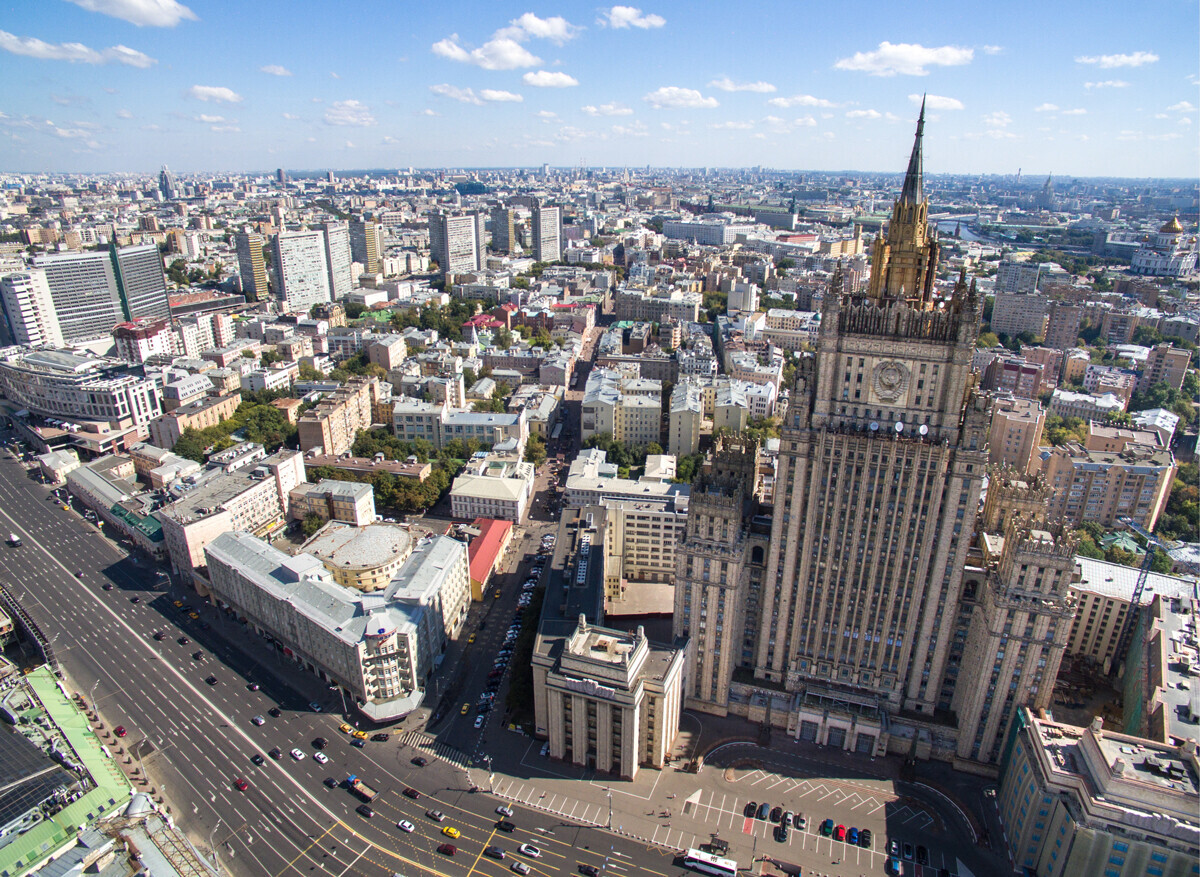
This high-rise is the only one that does not have an iconic star on it. There was an objective reason for that. And because of this, under the next leader of the country, the MFA building was called "a monument to Stalin's stupidity". Find out here about why one of the most beautiful skyscrapers was dubbed so.
This is the lowest high-rise of all – only 139 meters, together with its spire. They did not risk adding more floors. The hotel building was placed on 10-meter cast-iron pillars, with two underground rivers literally flowing under it. For fear that the hotel would sink, it was deliberately made not so heavy.

'Leningradskaya' is a little different from the other high-rises in style. Its interior is strongly influenced by medieval Russian architecture. For example, the elevator lobby is made in the form of an altar niche, the main entrance of the skyscraper is in the style of a terem (tower) porch, while the white, red and gold colored walls are also a reference to Old Russian architecture.
But, the high-rise was not denounced for its stylistic originality. We recount here about how and why it drew criticism after Stalin's death.
The design of the building implied that there would be an entrance to a subway station right in it. None of the seven Stalinist skyscrapers took on such a "challenge".
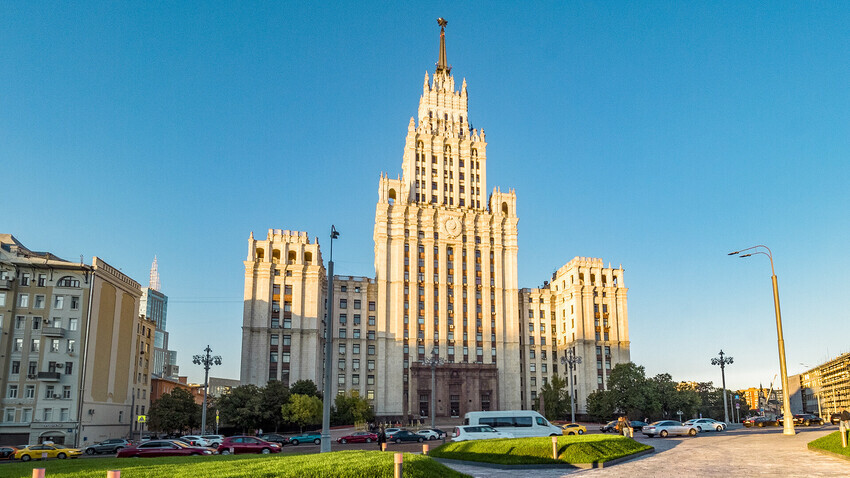
The high-rise at Krasnye Vorota was allocated for residential apartments and an administrative block and its own entrance to the subway was to be one of its highlights. However, the builders were faced with a problem. Typically, all underground premises (including the subway lobby) are the first to be built, after which the house itself is erected. But the Soviet leadership did not want to lose 18 months, which were required to accomplish it, and went for an incredible experiment instead – to build the skyscraper and the subway simultaneously.
To do this, the ground had to be frozen and the building had to be erected at an angle, akin to the Leaning Tower of Pisa. Read more about this risky venture here.
For some time, the residential building on Kudrinskaya Square was considered the most luxurious in Moscow. The building was completed in 1954, after Stalin's death, and was informally dubbed 'The House of Aviators': most of its residents were aircraft designers, pilots and bosses in the aviation industry.
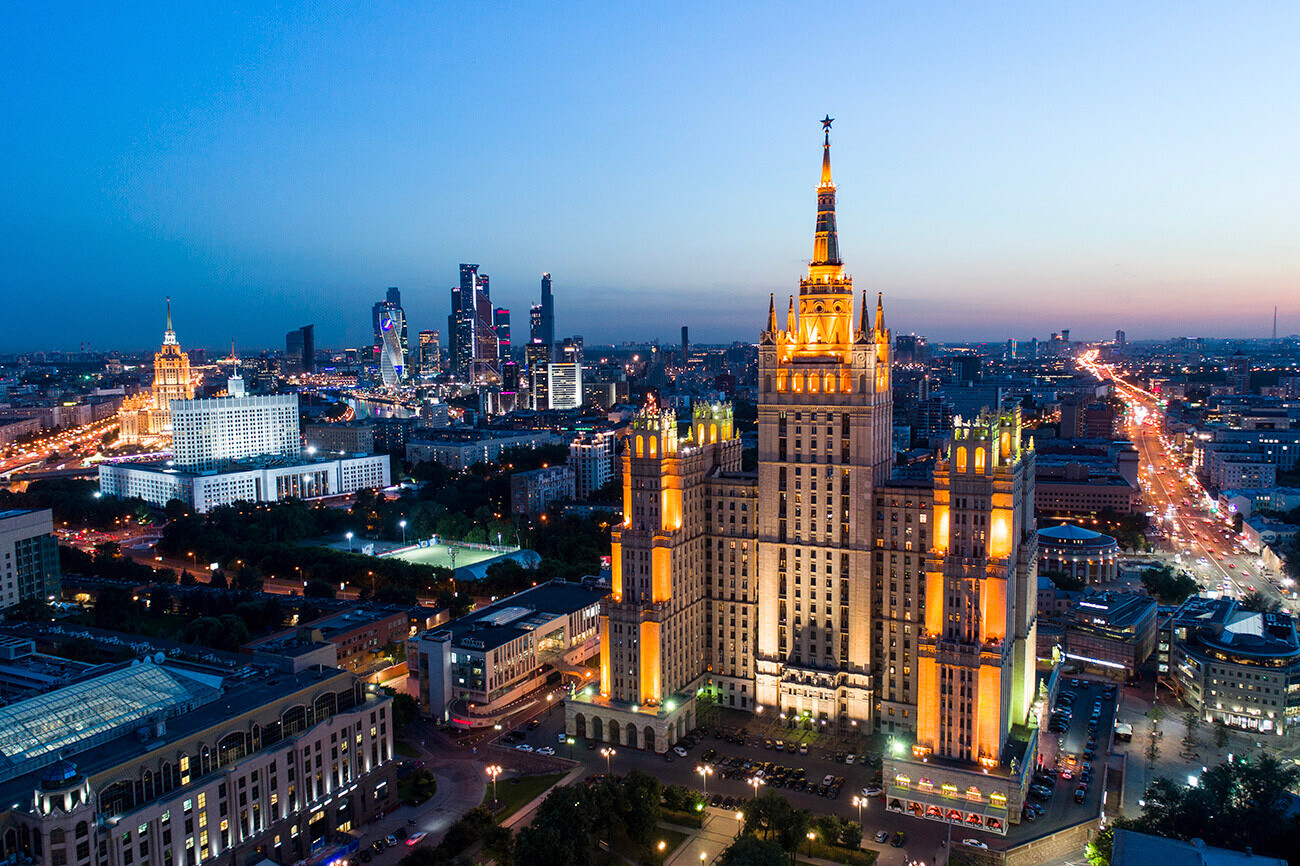
Marble columns in the lobby, stained glass panels, oak parquet floors in the apartments – everything emphasized the special status of its inhabitants. It also had a luxurious gourmet food store called 'Gastronome No. 15' – it was the largest grocery store in the country, where deficit goods were sold without fail.
But, the building was especially appreciated for having its own… bunker! You can read more about what was in it here.
In 1953, there was no Kutuzovsky Avenue in the area, but there were barracks and swamps instead – the place was considered the outskirts of Moscow. However, Stalin planned to build a model neighborhood there and decided to start its development with the most pompous building – a skyscraper.

The hotel opened in 1957 and became the largest in Europe at the time. It had 1,026 rooms and almost any service a foreign tourist would need. Yes, it was foreign guests that this hotel was primarily designed for. Only a select few among the Soviets had the opportunity to stay there.
It was there that rock musicians Bon Jovi, Cinderella, Mötley Crüe and Ozzy Osbourne stayed when they came to the USSR in 1989 to attend the Moscow International Peace Festival.
Yet, the experience of staying in the famous Soviet hotel was quite peculiar. Read about some of the experiences foreign celebrities had when staying there and how everything was organized at the time here.
The foundation for the eighth high-rise was laid in Zaryadye near the Kremlin walls, with a medieval Moscow neighborhood having even been demolished to this end. The building was to serve the administrative function.
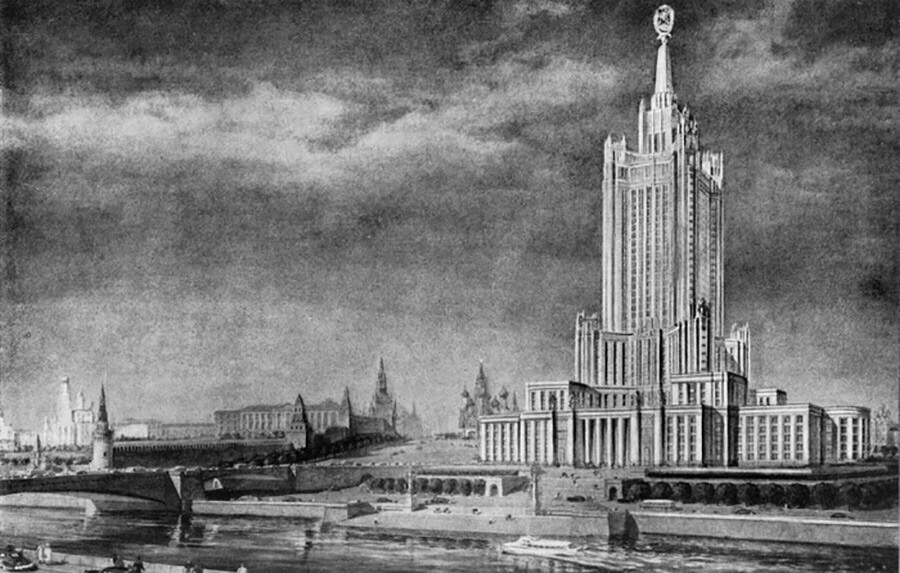
Interestingly, the height of the projected skyscraper kept increasing: as a result, it gradually went up from 26 floors to 37. But, along with the number of storeys, the estimated cost grew all the time, as well. It was this rising cost that prevented the skyscraper from being erected. The architects simply did not have time to have the final budget approved by the main ideologist behind the whole project – Stalin, who had just died. They had already managed to build something by then, but they could not go further than the frame of the first 14 floors without the approved budget.
When the time came to have it approved by the new authorities, the project was "wrapped up" – on the grounds of significant excesses.
After that, the frame of the house was dismantled and a giant hotel complex called 'Rossiya' was constructed on the foundation. Now, it's no longer there either, having been replaced by Zaryadye Park in 2017.
If using any of Russia Beyond's content, partly or in full, always provide an active hyperlink to the original material.
Subscribe
to our newsletter!
Get the week's best stories straight to your inbox